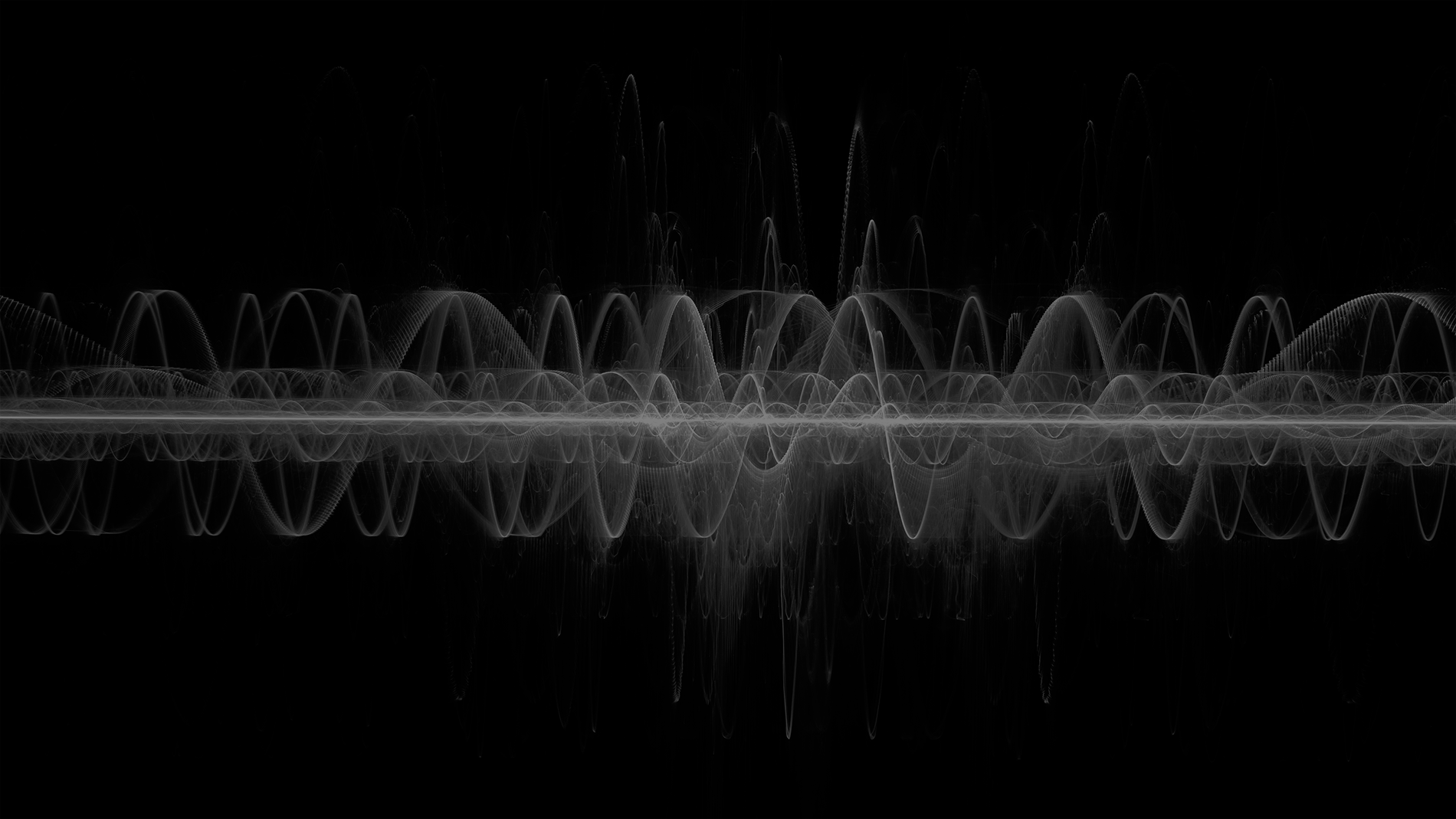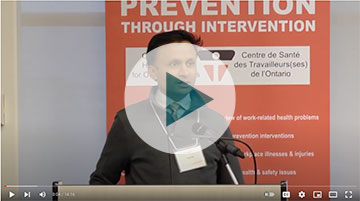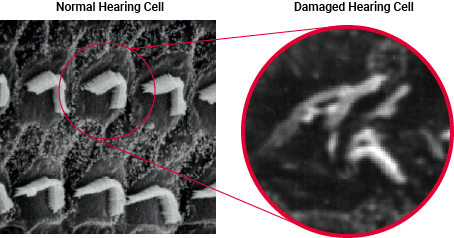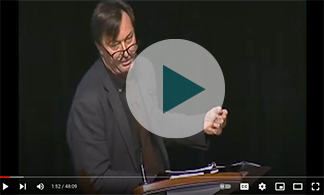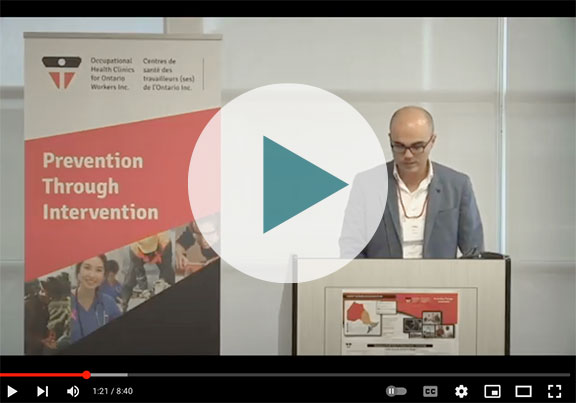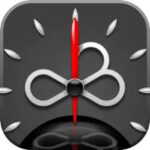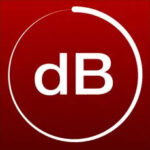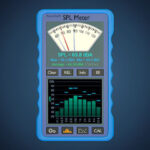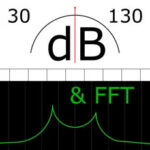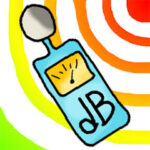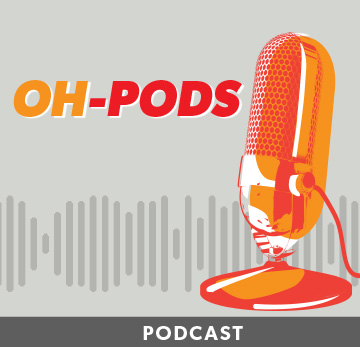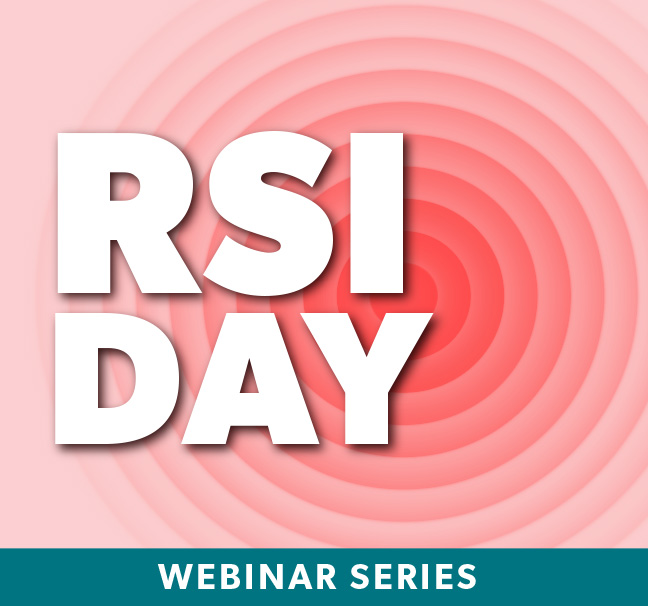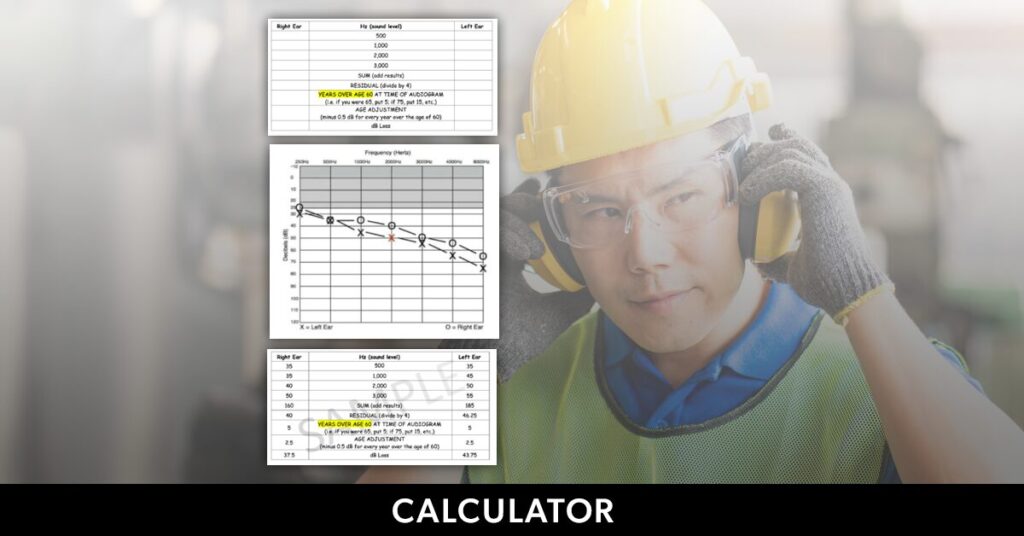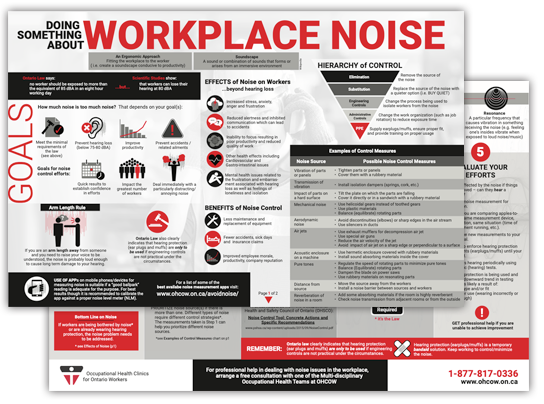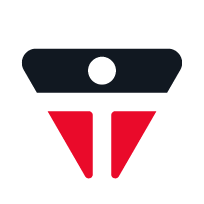Introduction
We experience noise and sound constantly in our daily lives, normally at safe levels. However, sound can permanently damage one's hearing when it occurs at high frequency and duration. If noise levels are too loud, even for short periods, it can cause noise-induced hearing loss (NIHL), also called permanent threshold shift (PTS). NIHL is one of the most common work-related illnesses in Ontario. A workplace is too loud if people have to raise their voices to be heard, if they have a ringing in their ears at the end of the day, or even if they notice the car radio is louder the next morning. Workplaces that aren’t thought of as “noisy” can cause NIHL, if there are infrequent but loud impact noises. Learn more about Noise, including how to monitor sound levels and how to control noise exposure here.
How Hearing Loss Occurs
All sound waves enters the outer ear and travel through the ear canal to the ear drum. The ear drum vibrates the 3 tiny bones in the middle ear called the malleus, incus, and stapes. These bones amplify the sound vibrations, and send them to the cochlea. The cochlea is lined with microscopic hair cells, which move in response to the sound wave. The hair cells transmits a “sound” signal to the auditory nerve.
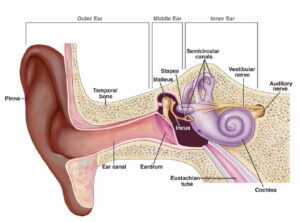
Image Source: NIDCD (U.S. National Institute on Deafness and Other Communication Disorders)
NIHL is what happens when the sound waves have caused permanent damage to the microscopic hair cells. NIHL can be caused by long-term exposures to noise or to very short-duration loud sounds called impact noise.

